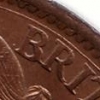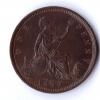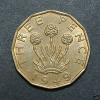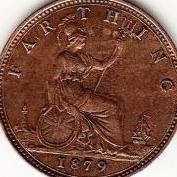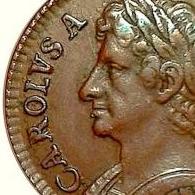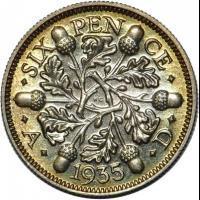Leaderboard
Popular Content
Showing content with the highest reputation on 12/18/2021 in all areas
-
I think the penny is nice, uncirculated but pretty ordinary otherwise, let’s generously say £200 worth. The slab, however, is very rare, you don’t see many MS67 1934 penny slabs and it must be worth at least £1200 to a dedicated slab collector, unless NGC decide to produce some more. Jerry 🙄3 points
-
I have always maintained that it is not possible to definitively identify a proof striking of a "normal metal" copper or bronze coin from a photograph unless it is totally pristine. We have all seen the same coin portrayed differently according to the conditions and technology used. The exception might be where a proof die is recognisably different from the working dies used to strike circulation coins. And I'm not sure that I've ever seen such a "different" proof striking. Coupled with the fact that there are probably no existing specimens of freshly struck Victorian circulation coins that have been immediately taken out of circulation and preserved in a collection, it is hard to know how close to "proof condition" an early, well-preserved circulation coin might be. Some of the bronzed proofs are clearly identifiable as proofs but probably because they definitely have never seen circulation. I bid on that 1859 penny at LCA but might have bid higher had I been able to examine it in hand. I did buy an 1860 F6A proof penny from DNW this year but not before I'd discussed its condition with DNW staff and also obtained a guarantee that I could return if not convinced. In hand it has very reflective and "polished" surfaces that satisfy me that it's a proof but photographs just do not capture that aspect. My 1861 F37 proof penny has very sharp edges and teeth but photos of it don't look particularly proof-like, although Colin Adams, who owned the coin previously, clearly considered it to be a proof. Bottom line is that you need to look at it in hand and decide for yourself.2 points
-
The OP coin does appear to be a proof, at least to me. However, I quite agree with your statement. I believe the "case for proofiness" has to be proved before being accepted In the Vicky silver series (LOL) there are many exceptional business strikes that have very prooflike appearance but IMO are not. And Peck's point about 20th C. "VIP" proofs are correct as well - I see examples of such with the 1951 and 1953 crowns and other coins from the sets of these years. Also, many TPG slabbed Wreaths in "proof" are IMO not at all, and these have been sold through at auction fairly frequently (I have posted my opinion on some of these several times on these boards as well).2 points
-
Just had this back from the auction house - over night response, which was brilliant. Link to the Portable Antiquities website showing the report on its find and authenticity: https://finds.org.uk/database/artefacts/record/id/966481 ... so repaired but genuine.2 points
-
In many cases it's very obvious, for numerous reasons, that a given coin is a proof. There are certain features or aspects which definitively mark it out as such. But with others there just doesn't seem (for me anyway) to be anything about certain coins, touted as proofs, which in any way distinguishes them from an ordinary business strike, let alone a specimen or early strike. But clearly many coins have become marked as proofs over the decades, and now sell as acknowledged proofs, often for a very high price compared to their currency contemporaries. I look at various coins touted as proofs, and really just would not trust the descriptions/pictures enough to accept that they are. I reckon in many cases we are reliant on some individual's personal opinion from many years ago. What is the view of others on here? Do you trust the descriptions implicitly - even the major auction house ones? I'm using the following coin as an example of one I don't necessarily trust as being a proof. Not saying it isn't, but differences aren't hitting me in the eye. It's only an example to emphasise my point - there are many others. The coin in question is an 1859 small date penny which went for £2,400 hammer at the recent LCA. It may well be a proof, and I know Peck identified 1859 as being a date where a copper proof penny was produced. But if you can see something about it which is different to an ordinary currency strike, let me know. It's even got that little extension to the base bar of T in GRATIA, present on all the currency strikes of 1859, which might indicate it comes from the same set of dies. link to possible 1859 proof1 point
-
1 point
-
It looks to me to have been annealed and straightened, with a very satisfactory result. Jerry1 point
-
I think it looks better repaired too, and it appears to have been done quite nicely.1 point
-
Personally I prefer it repaired. A split coin, as well as unattractive, is difficult to store without the pieces constantly slipping. With coins of this age I am happy to have a decent example clearly displaying the monarch's name, and to have it at an affordable price when so many are now out of my reach.1 point
-
Hmm, yes, possibly. But would you still think there was something special about it if it was just being sold as a BIN for £80 on e bay? If you would, then fair enough.1 point
-
I believe I have seen it work the other way too - in that some proofs get wrongly slabbed as MS grades by TPG companies that are either conservative or beholden to only listed varieties. Where that is the case, and an auction house catalogues it as a proof, an opportunity may arise to buy the coin when the other bids are on the slab. I guess the challenge is knowing when the slab is the one which is wrong!1 point
-
I know nothing whatsoever about this type of coin. BUT It's just looks wrong to me too- the colour- two tone -one wrong light coloured alloy treated in some way, with the dark bits all perfectly uniformly coloured. Nope- looks recently made -a 20 minute patina applied in a factory, rather than 250 years of hanging around in the back of a drawer....1 point
-
You missed out " §•¶ªººººº¢#¢€¡ºº˚¡ " but maybe you thought there may be children reading this....1 point
-
I wouldn't like to comment of whether the 1859 coin is a proof. However the parallel lines on the reverse of the coin may be due to some cleaning or wiping in the past.1 point
-
1 point
-
For me, that 1859 is a clear proof, even from just photos. The design and legends are unusually crisp and detailed, and there's something about the rim too. And the colour - though not proving anything - is distinctive. But I agree with you about some other coins, especially VIP proofs of the 20th Century. Some of the just look to me like currency strkes.1 point
-
1 point
-
1 point
-
1 point
-
1 point
-
Very soft detail, suspicious colouration and the vendor clearly thinks it’s iffy “NO RETURNS ACCEPTED,SOLD AS PER PICTURES”. I certainly won’t be bidding. Jerry1 point
-
Which pretty much makes a cast iron case for having a library. Sorry, don't have a copy here and haven't sold one, so assume it was foreign only and I didn't get the catalogue for whatever reason.1 point
-
1 point
-
Peter Andrew alerted me to the 1934 penny that sold in the Heritage auction for $1620 !!!!!!!!!!! https://coins.ha.com/itm/great-britain/great-britain-george-v-penny-1934-ms67-brown-ngc-/a/232150-63471.s?ic=homepage-myrecommendations-WorldCoins-item-052114&tab=MyRecommendations-0802160 points
